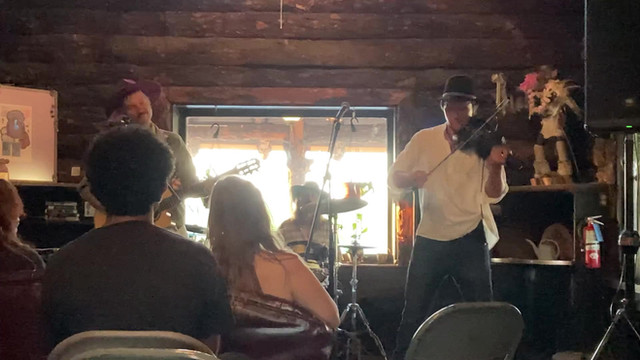HOME | DD
 Michaeldavitt — slaughterhouse 5
Michaeldavitt — slaughterhouse 5

Published: 2019-05-25 01:32:04 +0000 UTC; Views: 148; Favourites: 6; Downloads: 0
Redirect to original
Description
In 1880 the Village of Tombstone was bustling with frenzied miners, speculators, gamblers, and others who sought to make their fortunes. The smell of money was in the air and all hoped to cash in big. Among the service businesses taking their cut of the mineral wealth were the saloons. These centers of mining town social life preceded the arrival of churches and civic organizations, providing an oasis of civilization and recreation in the wild, untamed environs of southeastern Arizona. Many of their owners had ventured from opulent districts of major cities in California and the East, bringing with them business knowledge and practices that would ensure patronage of their establishments. It almost seemed that each successive saloon grand opening was designed to outdo the last in terms of services, decor, and product selection. The Oriental Saloon, not to be outdone, opened on July 22 of that year, issuing in the advent of one of Tombstone's two fanciest bars. Only the exotic Crystal Palace would provide any measurable amount of competition.George Parson, who kept a journal of his experiences in early Tombstone, noted the opening of the Oriental, writing that it was the "finest one [saloon] in town." Clara Brown, a correspondent writing for a California newspaper, also praised the Oriental's exclusive atmosphere, describing it as "simply gorgeous." The bar, carpeting, furnishings, periodicals, and live piano and violin music were impressive and quite an attraction in this tiny frontier town. It is hard to imagine that in this seemingly peaceful setting that blood would flow at times as easily as the whiskey.
In February 1881 Luke Short, who had an interest in the gambling concession at the Oriental, was working his table. Charlie Storms, a professional gambler with a less-than-favorable opinion of the table operator, had apparently been making disparaging statements directed toward Short. After simmering for several hours, the confrontation erupted outside of the Oriental on Allen Street. Both grappled with pulled pistols, but Short succeeded in leveling his piece toward his opponents' heart and fired twice. Storms quickly expired but not before getting off one round, but without effect. Parsons, who arrived at the scene just after the first shots were fired, wryly noted that "the faro games went right on as though nothing had happened."
This would not be the last episode of violence associated with the Oriental. Hardly a week later One-Armed Kelly was shot by a man named McAllister. Prior to the Gunfight at the O.K. Corral Billy Clanton and Frank McLowery had patronized the establishment. In December 1881 City Marshal Virgil Earp was ambushed just outside of the Oriental. A year later Buckskin Frank Leslie escaped an attempted ambush by Billy Claiborne, surprising and killing his opponent by approaching him from a side exit. Perhaps these incidents help explain why Parsons early-on had characterized the Oriental as "a regular slaughterhouse."
~ Ray Madzia





















